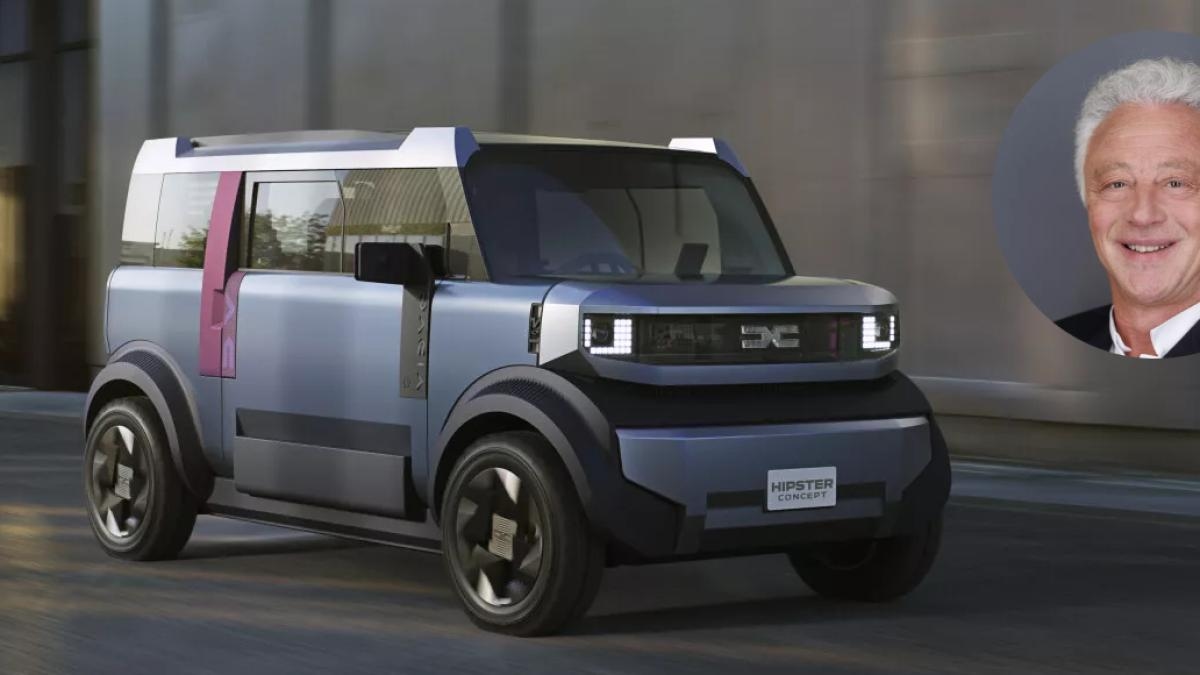Frank Marotte, Dacia's marketing and sales director: "If we can reduce weight, we can extend range without investing too much in batteries; that's really the key we need to implement."

Carlos Nieto
The presentation of the Dacia Hipster Concept has astonished everyone due to its simple design and spartan interior. An electric car destined to compete in the most basic entry-level segment , as if it were a Japanese ' kei car ' (mini car) but for Europe. It is rumored that its final cost will be around 10,000 euros , a price that seems from another era and that we will see if it can maintain, since for the moment the only thing that the Renault Group has presented is a concept car .

A concept that stands out for its practically non-existent on-board equipment, its light weight (around 800 kilos), and its shorter interior (barely 3 meters) than a Fiat 500. Even so, the Dacia Hipster promises to accommodate four people inside. It's like a Twizy, but bigger . Frank Marotte, Dacia's marketing and sales director, spoke about it during its presentation, highlighting the virtues that could make it a best-seller : "[We want] to allow as many people as possible to access essential mobility," the French executive emphasized, in words collected by the specialized media Autocar .

Essential mobility would require new European Union regulations to allow cars like the Hipster to be manufactured in the future. That is, free (or almost) of ADAS : “I think the European Commission [...] is beginning to recognize that, especially in the case of small cars, we have gone too far with certain regulations . Actual use by customers is completely disconnected from the latest active safety regulations in force,” Marotte asserted.
Something Renault has been insisting on for some time , even with Stellantis . And the Dacia Hipster is yet another blow to the table: “We must be more pragmatic; we need affordable cars to return to the market . We need to win back the market from customers who have abandoned it because they simply can't afford new or even used vehicles,” the Dacia executive emphasized.
In short, it's a case of 'let us work, we're the ones who understand cars.' For Frank Marotte, the Hipster is about stripping away all the things that aren't strictly necessary in a vehicle , thereby reducing costs and weight, something closely linked to performance in an electric car: "We need to work even harder than before on the design-cost and design-weight ratio. If we can reduce weight, we can extend the range without investing too much in batteries , so that's really the key we need to implement," emphasized Dacia's marketing and sales director.

Autocar also asked Dacia design director David Durand about the inspiration for the Hipster's lines. His answer isn't surprising, in line with the car's affordable spirit: "We were inspired by iconic popular cars like the Fiat Panda , the Citroën 2CV , and the Land Rover Series I. They were all highly regarded and inexpensive. They were very popular, and there were tons of them on the road," he concluded. In any case, the final say will, as always, lie with the European Union .
lavanguardia





